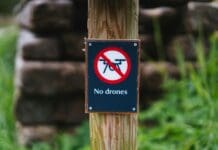This post is also available in:
 עברית (Hebrew)
עברית (Hebrew)
Geospatial imagery, facial recognition and other biometrics are driving the intelligence community’s research into artificial intelligence (AI). Other intelligence activities, such as human language translation and event warning, are also areas in which innovations are expected through academic and industry research programs. The Intelligence Advanced Research Projects Activity (IARPA) is working toward breakthroughs in AI, through a number of research programs. All the AI programs tap expertise in government, industry or academia.
IARPA is one of the biggest financial backers of AI research, states its director, Jason Matheny, and imagery is the biggest growth area for intelligence AI. Imagery, including video, is the area of machine learning in which the community is most overwhelmed by data.
According to afcea.org, the quantity of imagery makes it impractical for humans to analyze, so some form of automation is necessary. “Image recognition is probably the most mature application of machine learning, and the gains for national intelligence are enormous,” matheny stated. “The reason AI is needed in intelligence is that the world has scaled up in complexity, and there are scaling limits to human intelligence to make sense of that complexity,” he says. This complexity has exceeded the point where even massive numbers of human analysts have sufficient brainpower to perform their mission, Matheny continues. Machine learning offers a way to bridge the gap between available resources and pressing needs and allows the intelligence community to focus human brains and eyes where they are needed most.
Although many on-the-shelf capabilities for processing imagery exist, more progress can be made in this area. With its full roster of programs, IARPA faces some hurdles in developing AI for intelligence. Matheny admits that IARPA spends a large amount of money on data that can be released to researchers. This must be either existing unclassified data or something resembling classified data, which IARPA must cobble together from unclassified sources. These datasets would be used to train or test systems that are deployed against classified data.
IARPA also is interested in coordinating its AI research strategy with other organizations, so it works closely with groups such as DARPA, the National Science Foundation and the National Institute of Standards and Technology. There is broad recognition across the government that efforts to develop and adopt AI for the public good will not succeed without deeper public-private partnerships, Matheny observes. IARPA’s business model is to fund organizations in academia and industry that already are on the cutting edge of their research fields, he notes. Matheny describes the process for submitting ideas as informal.
“What we want most are the ideas that we wouldn’t have thought of ourselves,” he says. “We don’t just want industry or academia to parrot back to the government what the government is asking for. We want new breakthrough ideas that we couldn’t have come up with ourselves, and we might not even be asking the questions that lead to the ideas.”


























